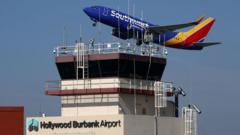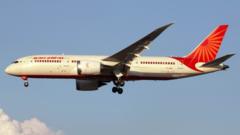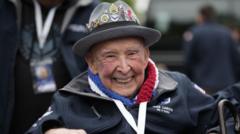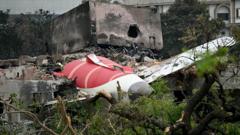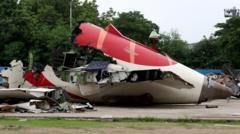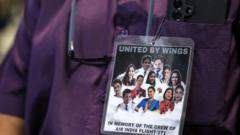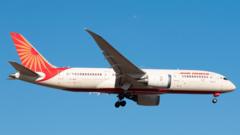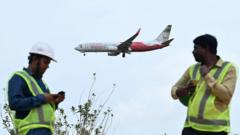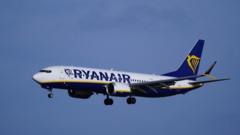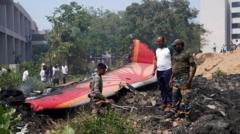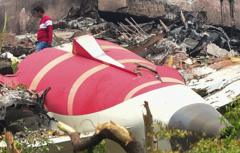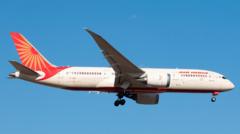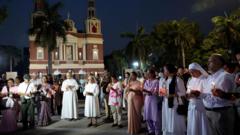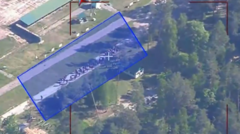The recent mid-air collision above Washington, D.C. raises critical questions about air traffic control and safety measures in a region renowned for its surveillance and strict regulations.**
Tragedy in the Skies: Analyzing the Mid-Air Collision Over DC**
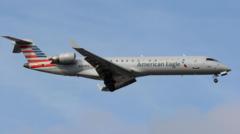
Tragedy in the Skies: Analyzing the Mid-Air Collision Over DC**
Understanding the unexpected crash between a passenger plane and a military helicopter in one of the world's most monitored airspaces.**
In a shocking incident that has left the aviation community reeling, a passenger plane and a military helicopter collided in what experts have termed "the most controlled bit of airspace in the world." The unfortunate encounter involved a US Army Black Hawk helicopter, which had been training with a crew of three, and an American Airlines jet carrying 64 passengers. The collision occurred mere seconds before the airliner was set to land at Washington National Airport, sending both aircraft plummeting into the freezing waters of the Potomac River.
This busy airspace, located over the U.S. capital, is often saturated with civilian and military flights, including those transporting high-ranking officials. Despite the influx of air traffic, UK aviation expert John Strickland highlighted that this alone cannot explain the catastrophic incident. He pointed out that while Washington National is situated near other airports such as Dulles and Baltimore, effective traffic management is inherently essential to ensure safe separations among aircraft.
Nexus zones, where various aviation systems intersect, are notoriously complicated and prone to accidents, according to aviation consultant Philip Butterworth-Hayes. He emphasized that the simultaneous operation of both military and civilian systems creates a layer of complexity that warrants vigilance.
The complexity is compounded by the fact that Ronald Reagan Washington National Airport itself is government-owned, located at a keystone point over the District of Columbia, which is surrounded by heavily restricted airspace due to its significance. While the last fatal accident involving a commercial aircraft was recorded back in February 2009, experts largely agree that this collision is an anomalous event given the rigorous safety protocols in place.
As both the military helicopter and passenger plane were believed to be in continuous communication with air traffic control, newly released audio suggests that air traffic controllers were directing the helicopter to maintain visual contact with the passenger plane and adjust its flight path accordingly. The analysis of the crash indicates a breakdown in several safety mechanisms that should have prevented such an occurrence.
Training protocols specific to night flying were being adhered to by the Black Hawk helicopter crew, who were identified as experienced operators. However, the incident draws the attention of experts like Cedric Leighton, a retired Air Force colonel, who stressed the necessity for pilots to be adept at navigating the busy airspace.
As investigations continue into this tragic event, aviation consultant Butterworth-Hayes speculated that an overhaul of current procedures for both civilian and military flights is nearly inevitable. Experts like Neil Hansford have expressed concern that similar circumstances would likely not yield such disastrous outcomes under tighter regulations found in Europe or Australia.
Additionally, the aircraft’s reduced speed during its approach for landing played a significant role in the incident's severity, increasing its vulnerability to sudden changes or disturbances in the airspace.
The ramifications of this tragedy are still unfolding as search and rescue operations continue in the Potomac River, but what remains clear is the urgent need for a thorough reevaluation of air traffic protocols in the nation's capital.
This busy airspace, located over the U.S. capital, is often saturated with civilian and military flights, including those transporting high-ranking officials. Despite the influx of air traffic, UK aviation expert John Strickland highlighted that this alone cannot explain the catastrophic incident. He pointed out that while Washington National is situated near other airports such as Dulles and Baltimore, effective traffic management is inherently essential to ensure safe separations among aircraft.
Nexus zones, where various aviation systems intersect, are notoriously complicated and prone to accidents, according to aviation consultant Philip Butterworth-Hayes. He emphasized that the simultaneous operation of both military and civilian systems creates a layer of complexity that warrants vigilance.
The complexity is compounded by the fact that Ronald Reagan Washington National Airport itself is government-owned, located at a keystone point over the District of Columbia, which is surrounded by heavily restricted airspace due to its significance. While the last fatal accident involving a commercial aircraft was recorded back in February 2009, experts largely agree that this collision is an anomalous event given the rigorous safety protocols in place.
As both the military helicopter and passenger plane were believed to be in continuous communication with air traffic control, newly released audio suggests that air traffic controllers were directing the helicopter to maintain visual contact with the passenger plane and adjust its flight path accordingly. The analysis of the crash indicates a breakdown in several safety mechanisms that should have prevented such an occurrence.
Training protocols specific to night flying were being adhered to by the Black Hawk helicopter crew, who were identified as experienced operators. However, the incident draws the attention of experts like Cedric Leighton, a retired Air Force colonel, who stressed the necessity for pilots to be adept at navigating the busy airspace.
As investigations continue into this tragic event, aviation consultant Butterworth-Hayes speculated that an overhaul of current procedures for both civilian and military flights is nearly inevitable. Experts like Neil Hansford have expressed concern that similar circumstances would likely not yield such disastrous outcomes under tighter regulations found in Europe or Australia.
Additionally, the aircraft’s reduced speed during its approach for landing played a significant role in the incident's severity, increasing its vulnerability to sudden changes or disturbances in the airspace.
The ramifications of this tragedy are still unfolding as search and rescue operations continue in the Potomac River, but what remains clear is the urgent need for a thorough reevaluation of air traffic protocols in the nation's capital.

